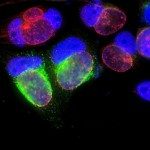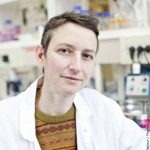Link to Pubmed [PMID] – 28089380
Trends Plant Sci. 2017 Jan;
The plastid originated 1.5 billion years ago through a primary endosymbiosis involving a heterotrophic eukaryote and an ancient cyanobacterium. Phylogenetic and biochemical evidence suggests that the incipient endosymbiont interacted with an obligate intracellular chlamydial pathogen that housed it in an inclusion. This aspect of the ménage-à-trois hypothesis (MATH) posits that Chlamydiales provided critical novel transporters and enzymes secreted by the pathogens in the host cytosol. This initiated the efflux of photosynthate to both the inclusion lumen and host cytosol. Here we review the experimental evidence supporting the MATH and focus on chlamydial genes that replaced existing cyanobacterial functions. The picture emerging from these studies underlines the importance of chlamydial host-pathogen interactions in the metabolic integration of the primary plastid.

